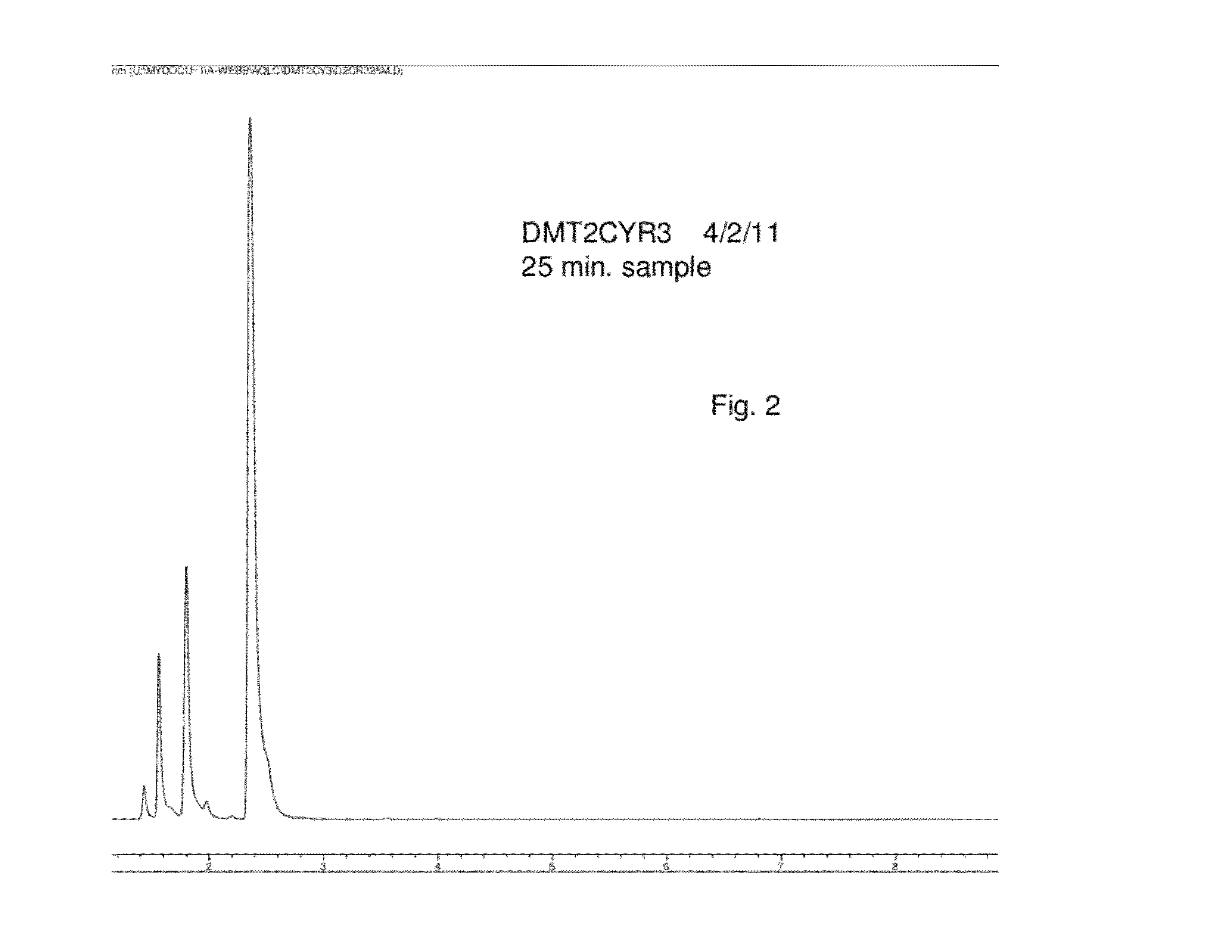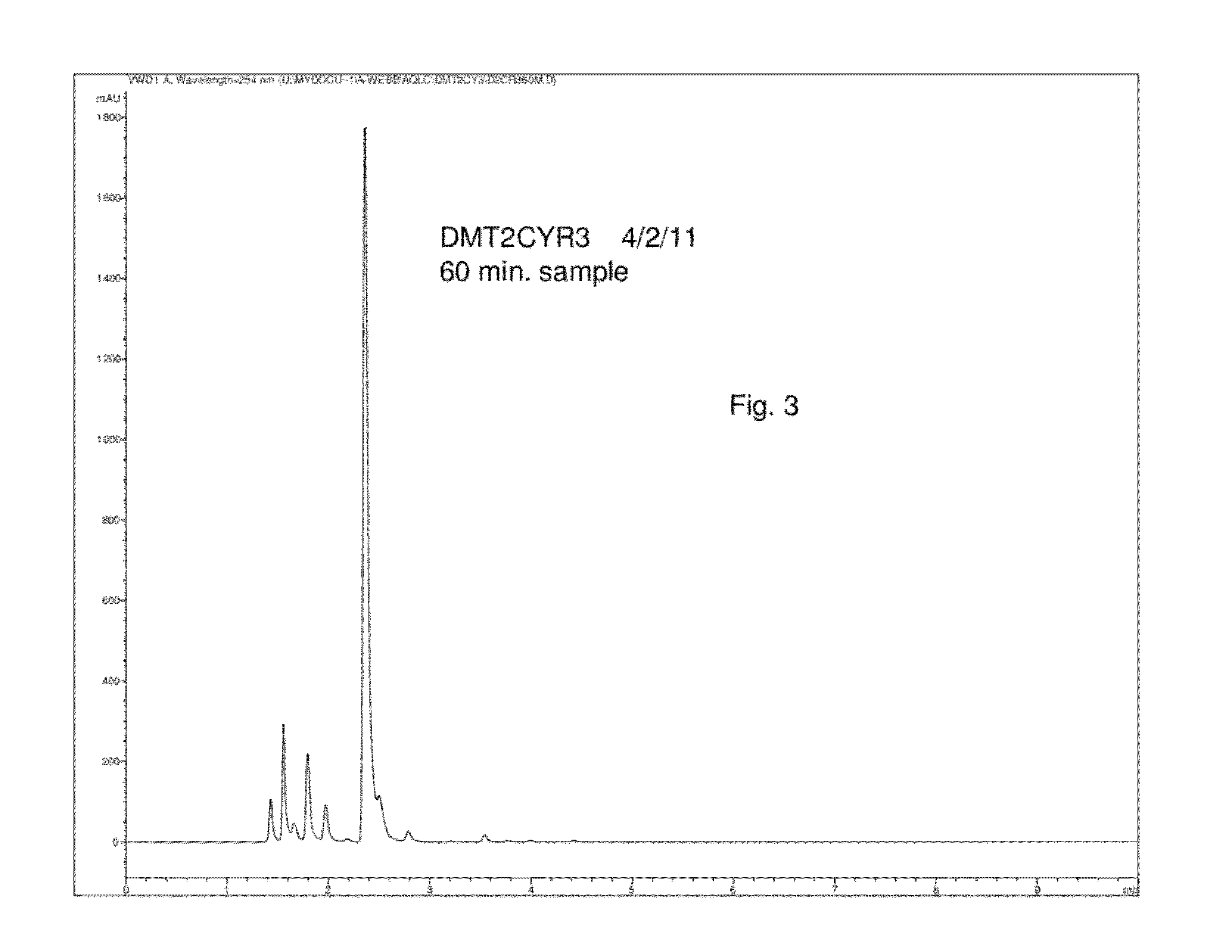Methods for Preparation of Macrocyclic Polyester Oligomer via Heterogeneous Catalysis
a technology of polyester oligomer and macrocyclic polyester, which is applied in the field of methods for preparing macrocyclic polyester oligomer, can solve the problems of longer time period in which column packing becomes spent, needs replacement or recycling, and the level of residual acids in the column is lower, so as to reduce the amount of residual oligomer, reduce catalyst concentration, and reduce the effect of filtration
- Summary
- Abstract
- Description
- Claims
- Application Information
AI Technical Summary
Benefits of technology
Problems solved by technology
Method used
Image
Examples
experimental examples
MPO from DMT with a SiO2-Ti Solid Catalyst
[0040]Experiments were conducted to demonstrate preparation of cPBT directly from DMT and BDO via heterogeneous catalysis. The reaction set-up consisted of a 3 L three-necked flask fitted with an overhead stirrer, a sample port, a Dean Stark trap (boil up leg packed with stainless steel packing to assist separation), a vapor purge (a slow upward flow of N2 through the condenser to push volatiles out overhead [see FIG. 1]), just above the Dean Stark trap, a Vigreux column on top of the vapor purge (o-DCB reflux never reached beyond the very bottom of the Vigreux column), a water cooled condenser on top of the Vigreux column, and a nitrogen bubbler on the outlet of the condenser. The whole system was kept under a slight nitrogen pressure. Water and o-DCB were removed from the bottom of collection leg of the Dean Stark trap.
[0041]Initially the 3 L flask was charged with 2250 ml of o-DCB and 14.0 g of silica gel. The head space was purged with N...
PUM
| Property | Measurement | Unit |
|---|---|---|
| boiling point | aaaaa | aaaaa |
| time | aaaaa | aaaaa |
| heat | aaaaa | aaaaa |
Abstract
Description
Claims
Application Information
 Login to View More
Login to View More - R&D
- Intellectual Property
- Life Sciences
- Materials
- Tech Scout
- Unparalleled Data Quality
- Higher Quality Content
- 60% Fewer Hallucinations
Browse by: Latest US Patents, China's latest patents, Technical Efficacy Thesaurus, Application Domain, Technology Topic, Popular Technical Reports.
© 2025 PatSnap. All rights reserved.Legal|Privacy policy|Modern Slavery Act Transparency Statement|Sitemap|About US| Contact US: help@patsnap.com



